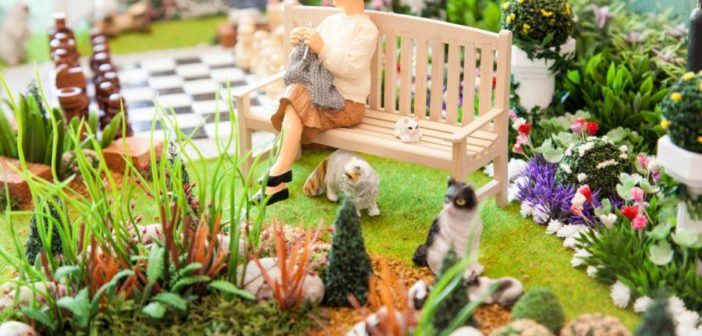Photo by Shaun Meintjes
Disclosure: Some of the links in this write up are affiliate links which means that if you buy through any link here, we get paid a small referral fee which helps support this website. We want to let you know that this does not affect our review. We generally are impressed with the products we mention unless otherwise noted.
A Comforting Companion in An Aging in Place Product
Even prior to the pandemic, it was clear that older Americans have become increasingly socially isolated. The impact of social isolation on elders is not just loneliness. It can have profound implications on all areas of health. According to the NIH, social isolation has been linked to “high blood pressure, heart disease, obesity, a weakened immune system, anxiety, depression, cognitive decline, Alzheimer’s disease and even death.” If an aging in place product could decrease the results of loneliness and isolation even slightly, that would be noteworthy progress.
Enter the robot cat. Now, if you are like me, you may greet this idea with some skepticism. How could a toy cat or dog even begin to provide comfort to an elderly person? Wouldn’t an older adult feel that they were being treated like a child? Wouldn’t a person who has been a lifetime animal lover respond that this mechanical pet is a poor substitute for the real thing?
Desperate Times call for Desperate Measures
As the shutdown proceeded in 2020, many older adults who live in their homes suddenly found themselves alone and isolated. Many older adults living independently rely on home services to stay connected to the world and to maintain their health. Caseworkers, home health nurses and other health professionals were suddenly cut off from their clients. And, those clients, living alone with a variety of health issues already, were quickly at greater risk for decline.
As reported in the New Yorker magazine, the state of New York decided to try something unusual to help their stranded older adult population. They had already run a pilot program giving Joy for All robot cats and dogs to a small number of older adults in community care who were identified as lonely. When the shut down hit, they acquired a large order of the Joy for All pets. The caseworkers couldn’t go inside the homes due to widespread COVID. So, they distributed the pets to many older adults when they took them prepackaged food and supplies to their doorsteps.
The Results were Positive
The program distributing the Joy For All pets became widely popular. Now, 21 states across the country have similar programs in their aging departments. The robot pets are referred to as “social robots.” They are not classified by their manufacturers as toys. The industry has labeled them as “emancipatory” and “conversational” technology. And, these companies are improving the technology to create more variety and responses to the humans who use them. They are studying how people respond to their products and seeking to make them more enjoyable.
In the New Yorker article, a number of elder adults who were given Joy For All pets were interviewed. These adults did not have dementia, but had a variety of other health limitations. They acknowledged that the pet was not real. At the same time, they described feeling glad to have something or someone to talk to. They admitted that they could smile, and sometimes laugh, when the robot cat meowed or the robot dog barked. The “cat” owners enjoyed when the pet purred or rolled to its side.
Putting it to the Test: My Family’s Robot Pet Story
A year or two before the pandemic, my family decided to get a robot cat for my mother. My mother has dementia and has been an animal lover all of her life. Due to her living situation, she could not have a real pet. She had always had a dog as a pet. Her last beloved dog had died a couple of years before.
My mother had not always been a fan of cats. She was allergic to them. When I was a child, my mom conceded and we got a cat. And, amazingly, she did not have problems. But, we all knew, if she had a choice, she would rather have a dog.
At the time we were considering a robot pet, we were more impressed with the robot cats than the dogs. Since cats are often sleeping and reclining, the more sedentary robot cat seemed more realistic to us. And, we thought that this would be more acceptable to my mom.
How did my mother respond? She loved it. When I arrived to visit her, she said proudly, “have you seen my cat yet?” She had a big smile and was very pleased when the cat would purr and meow. It would close its eyes and she would tell me that it was sleepy. She pet it, and whispered sweet affectionate words to it, just the way she did with our family pets.
We also invite friends and family to bring their real four legged friends to visit my mother whenever they have the chance. While this is always a highlight for our mom, it doesn’t happen as often as we or she would like. That is simply a reality of living with dementia. No matter what your living situation, the social circle grows smaller.
A robot cat or dog is only a substitute for a real live pet. Humans and animals have long lived together with care and connection. Strange as it may seem, a substitute pet can offer a reminder of that relationship. And, that is valuable.
Explore the Joy For All cats here:





